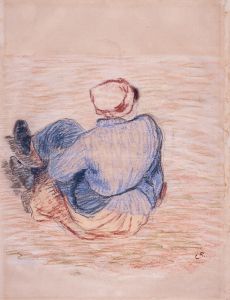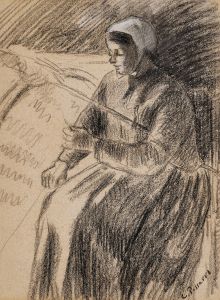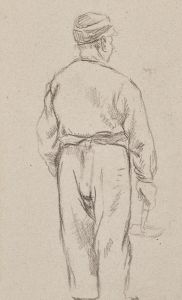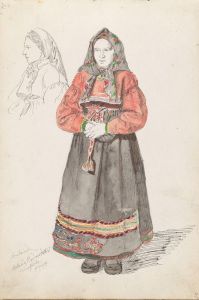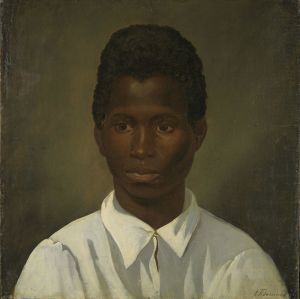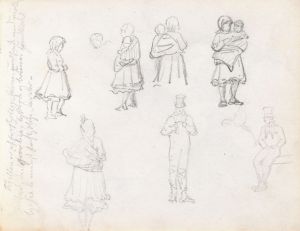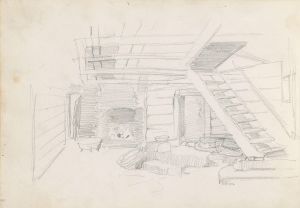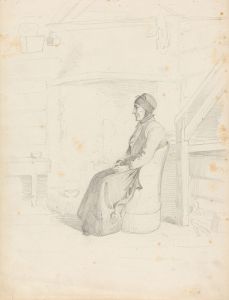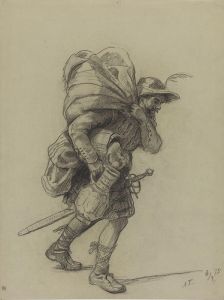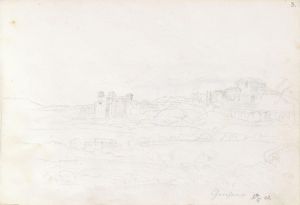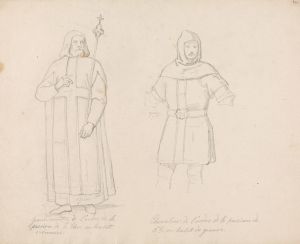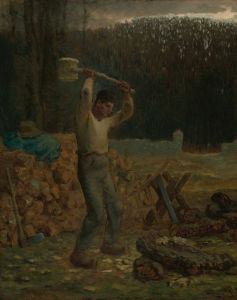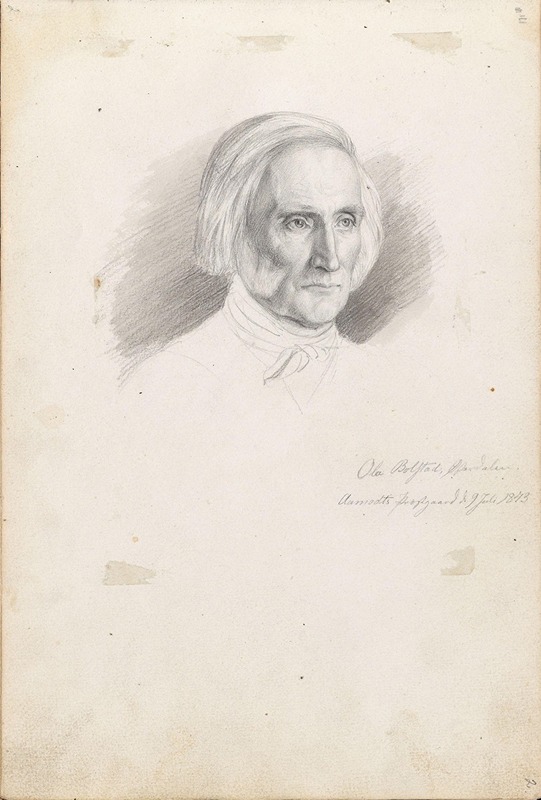
Ola Bolstad
A hand-painted replica of Adolph Tidemand’s masterpiece Ola Bolstad, meticulously crafted by professional artists to capture the true essence of the original. Each piece is created with museum-quality canvas and rare mineral pigments, carefully painted by experienced artists with delicate brushstrokes and rich, layered colors to perfectly recreate the texture of the original artwork. Unlike machine-printed reproductions, this hand-painted version brings the painting to life, infused with the artist’s emotions and skill in every stroke. Whether for personal collection or home decoration, it instantly elevates the artistic atmosphere of any space.
Adolph Tidemand was a prominent Norwegian painter, best known for his role in the development of Norwegian national romanticism in art. His works often depicted Norwegian folk life and traditions, capturing the essence of rural Norway during the 19th century. One of his notable paintings is "Ola Bolstad," which exemplifies his style and thematic focus.
Adolph Tidemand was born on August 14, 1814, in Mandal, Norway. He studied at the Academy of Fine Arts in Copenhagen and later continued his education in Düsseldorf, Germany, which was a significant center for art at the time. Tidemand became associated with the Düsseldorf school of painting, known for its detailed and realistic portrayal of subjects. This influence is evident in his meticulous attention to detail and the realistic depiction of his subjects.
"Ola Bolstad" is one of Tidemand's works that reflects his interest in Norwegian culture and the everyday lives of its people. The painting portrays Ola Bolstad, a figure believed to be a representative of the rural Norwegian populace. Tidemand's focus on such subjects was part of a broader movement during the 19th century, where artists sought to capture the unique cultural identity of their nations. In Norway, this was particularly significant as the country was seeking to establish its national identity following its independence from Denmark in 1814.
The painting is characterized by its realistic style, a hallmark of Tidemand's work. He often used a naturalistic approach to depict his subjects, paying close attention to their attire, expressions, and surroundings. This attention to detail not only provided an accurate representation of Norwegian life but also conveyed a sense of authenticity and respect for the subject matter.
Tidemand's work, including "Ola Bolstad," played a crucial role in the national romantic movement in Norway. This movement was part of a larger European trend where artists, writers, and musicians sought to express the unique cultural and historical aspects of their countries. In Norway, this involved a focus on the rural landscape, folklore, and traditional customs, all of which Tidemand captured in his paintings.
Throughout his career, Tidemand collaborated with other artists, most notably Hans Gude. Together, they created several iconic works, such as "Bridal Procession on the Hardangerfjord," which combined Tidemand's figures with Gude's landscapes. While "Ola Bolstad" is not a collaborative work, it shares the same spirit of celebrating Norwegian culture and heritage.
Adolph Tidemand's contribution to Norwegian art is significant. His paintings not only provide a window into 19th-century Norwegian life but also helped to shape the country's cultural identity. "Ola Bolstad," like many of his works, continues to be appreciated for its historical and cultural significance, as well as its artistic merit.
In summary, "Ola Bolstad" by Adolph Tidemand is a testament to the artist's dedication to portraying Norwegian life with authenticity and respect. Through his detailed and realistic style, Tidemand captured the essence of a nation seeking to define itself, making his work an enduring part of Norway's cultural heritage.





